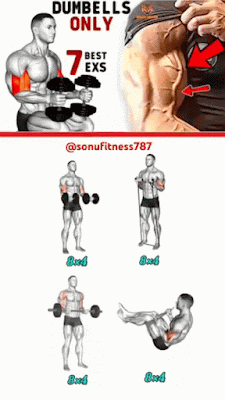The Sleep Deprivation Spiral: Navigating the 5 Stages
Sleep deprivation is more than just feeling tired—it’s a downward spiral that can wreak havoc on your mind, body, and overall well-being. When you miss out on sleep, even for a short period, your body enters a cascade of physiological and psychological changes that grow increasingly severe over time. This phenomenon, often referred to as the "sleep deprivation spiral," unfolds in five distinct stages. Understanding these stages can help you recognize the signs and take action before the effects become overwhelming. Let’s explore the five stages of the sleep deprivation spiral and how to navigate them.
Stage 1: The Foggy Phase (24 Hours Without Sleep)
The spiral begins subtly. After 24 hours without sleep, your body starts to feel the strain. This stage is marked by:
- Mental fog: Difficulty concentrating, forgetfulness, and slower reaction times.
- Mood swings: Irritability, anxiety, or heightened emotional sensitivity.
- Physical fatigue: Heavy eyelids, mild headaches, and a general sense of exhaustion.
At this point, you might feel like you can power through with caffeine or sheer willpower, but your cognitive and physical performance is already compromised. This is your body’s first warning sign to prioritize rest.
Stage 2: The Struggle Phase (36 Hours Without Sleep)
As the spiral continues, the effects of sleep deprivation become more pronounced. By the 36-hour mark, your body is in full protest, and symptoms escalate to:
- Severe cognitive decline: Trouble with memory, decision-making, and problem-solving.
- Microsleeps: Brief, involuntary episodes of sleep that last a few seconds, often without you realizing it.
- Physical strain: Elevated heart rate, increased blood pressure, and a surge in stress hormones like cortisol.
This stage is particularly dangerous for tasks that require focus, such as driving or operating heavy machinery. The risk of accidents and errors increases significantly, making it crucial to pause and rest.
Stage 3: The Delirious Phase (48 Hours Without Sleep)
By the 48-hour mark, the spiral takes a darker turn. Your brain and body are now in a state of heightened stress, leading to:
- Hallucinations: Visual or auditory distortions as your brain struggles to process reality.
- Disorientation: Confusion about time, place, or even your own identity.
- Emotional instability: Extreme mood swings, paranoia, or feelings of hopelessness.
At this stage, your immune system also begins to weaken, leaving you more vulnerable to illness. The longer you stay in this phase, the harder it becomes to function normally.
Stage 4: The Breakdown Phase (72 Hours Without Sleep)
After three days without sleep, the spiral reaches a critical point. Your mind and body are in crisis, and the symptoms become severe:
- Severe cognitive dysfunction: Inability to form coherent thoughts or communicate effectively.
- Physical collapse: Extreme fatigue, muscle weakness, and tremors.
- Psychotic symptoms: Delusions, paranoia, and a complete disconnect from reality.
Your body’s systems are now in overdrive, and the risk of long-term damage increases. Sleep is no longer optional—it’s a necessity for survival.
Stage 5: The Collapse Phase (96+ Hours Without Sleep)
The final stage of the sleep deprivation spiral is life-threatening. After four or more days without sleep, your body reaches a breaking point:
- Complete mental and physical shutdown: Your brain may enter a state of psychosis, and your body can no longer sustain basic functions.
- Organ failure: Prolonged sleep deprivation can strain your heart, liver, and other vital organs.
- Death: In extreme cases, the body may simply give out, leading to fatal consequences.
Thankfully, most people will fall asleep long before reaching this stage, as the body’s need for rest becomes overwhelming.
How to Navigate the Sleep Deprivation Spiral
The key to breaking free from the sleep deprivation spiral is recognizing the early warning signs and taking action. Here are some tips to help you navigate and prevent the spiral:
- Listen to Your Body: If you’re feeling fatigued or foggy, don’t ignore it. Rest is essential.
- Prioritize Sleep: Aim for 7-9 hours of sleep per night, and create a consistent sleep schedule.
- Create a Sleep-Friendly Environment: Keep your bedroom dark, quiet, and cool to promote better sleep.
- Limit Stimulants: Avoid caffeine, nicotine, and screens before bed, as they can interfere with your ability to fall asleep.
- Seek Help if Needed: If you’re struggling with chronic sleep issues, consult a healthcare professional for guidance.
The Bottom Line
The sleep deprivation spiral is a dangerous and often underestimated phenomenon. By understanding the five stages, you can take proactive steps to protect your health and well-being. Remember, sleep is not a luxury—it’s a necessity. Don’t let the spiral take control. Prioritize rest, listen to your body, and break free from the cycle of sleep deprivation before it’s too late. Your mind and body will thank you.









.gif)

.gif)
